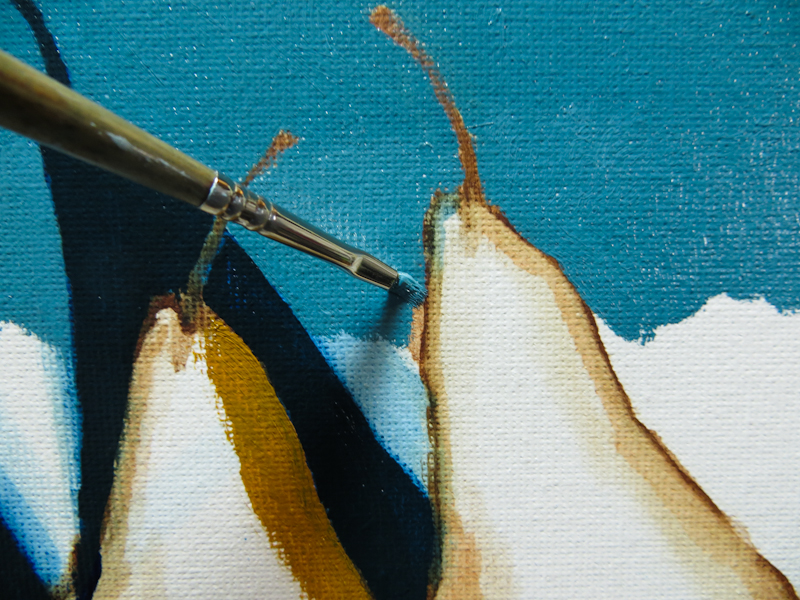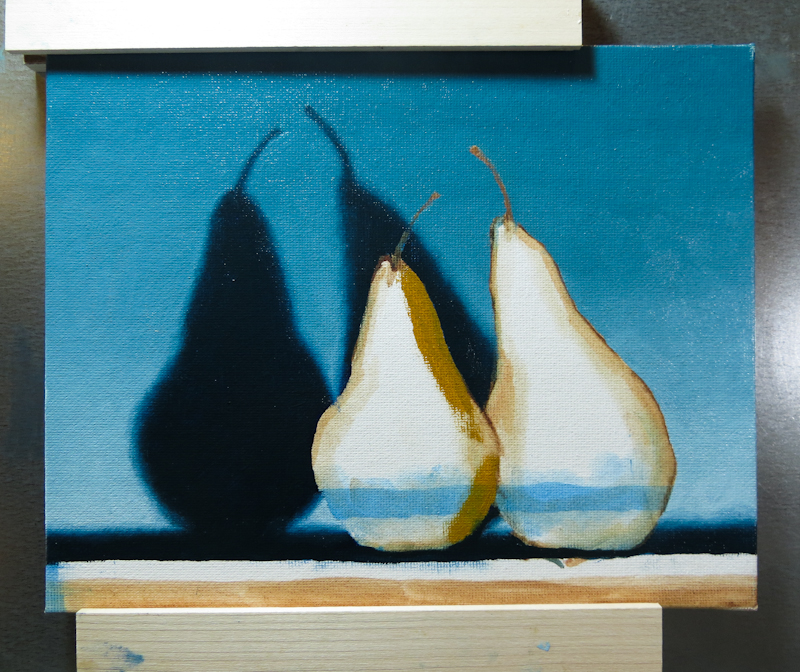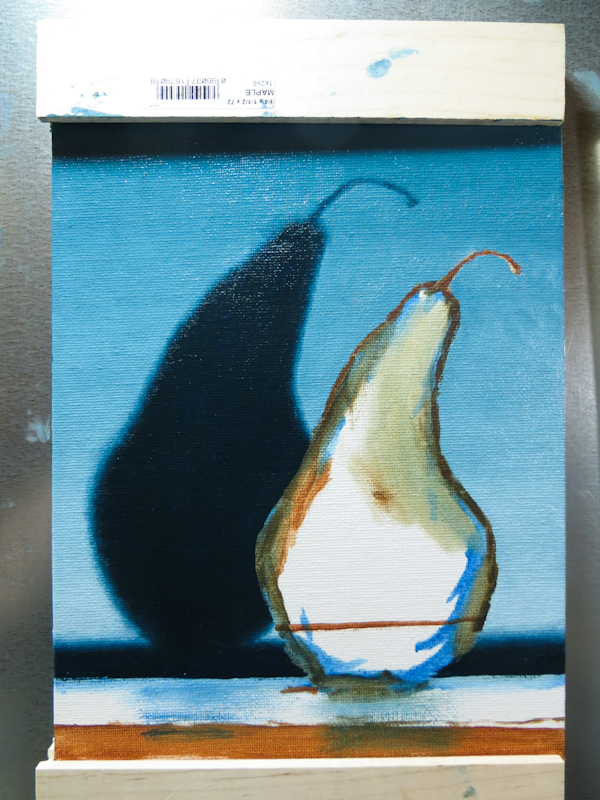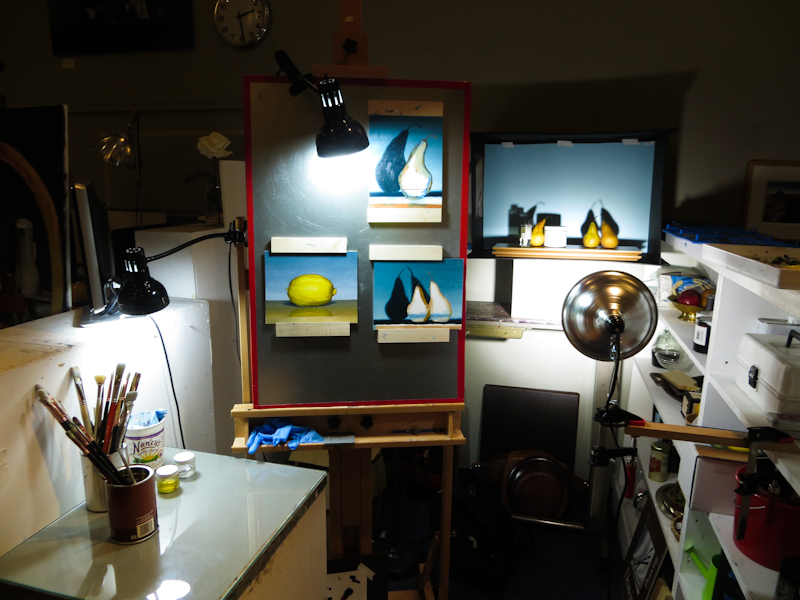I stayed up late to paint in the backgrounds of my pear and shadow pictures. I’m finding that it is easier to start with the background, particularly if it involves a smooth gradient that is darker than the foreground.
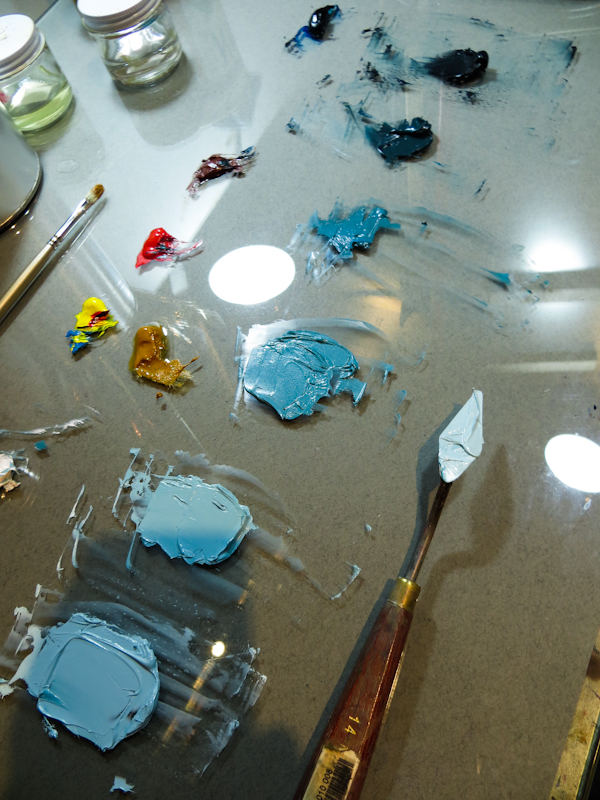
The string for the background was based on Prussian Blue. The lighter values were desaturated with Cadmium Yellow and Red and then lightened with white. The darker values used Burnt Sienna instead of Cadmium Red.
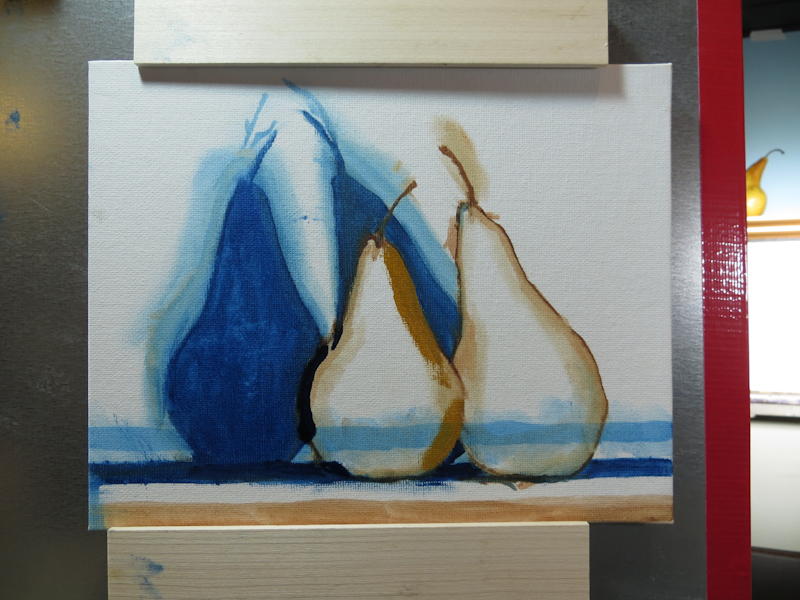
Before working on the background, I adjusted the pear shapes to be a little less generic. Adjustments were in Yellow Ochre and Prussian Blue. Note in particular the restating of the lower left edge of the left pear to show a larger triangle of light blue background. The upper right edge of the left pear was restated to make the shape less generic.

The new magnetic easel really comes in handy for exacting edge work because I can easily rotate the piece I am working on. I will still have to practice painting in all directions if I want to do large paintings.

I mixed a string of four values for the background gradient, and then painted steps of these values and the three in between. I’ve found that it is best to work from the darks into the lights. When working from light to dark, the lighter values can easily obliterate the darker values because the lighter pigments tend to be opaque while the darker pigments are transparent.

